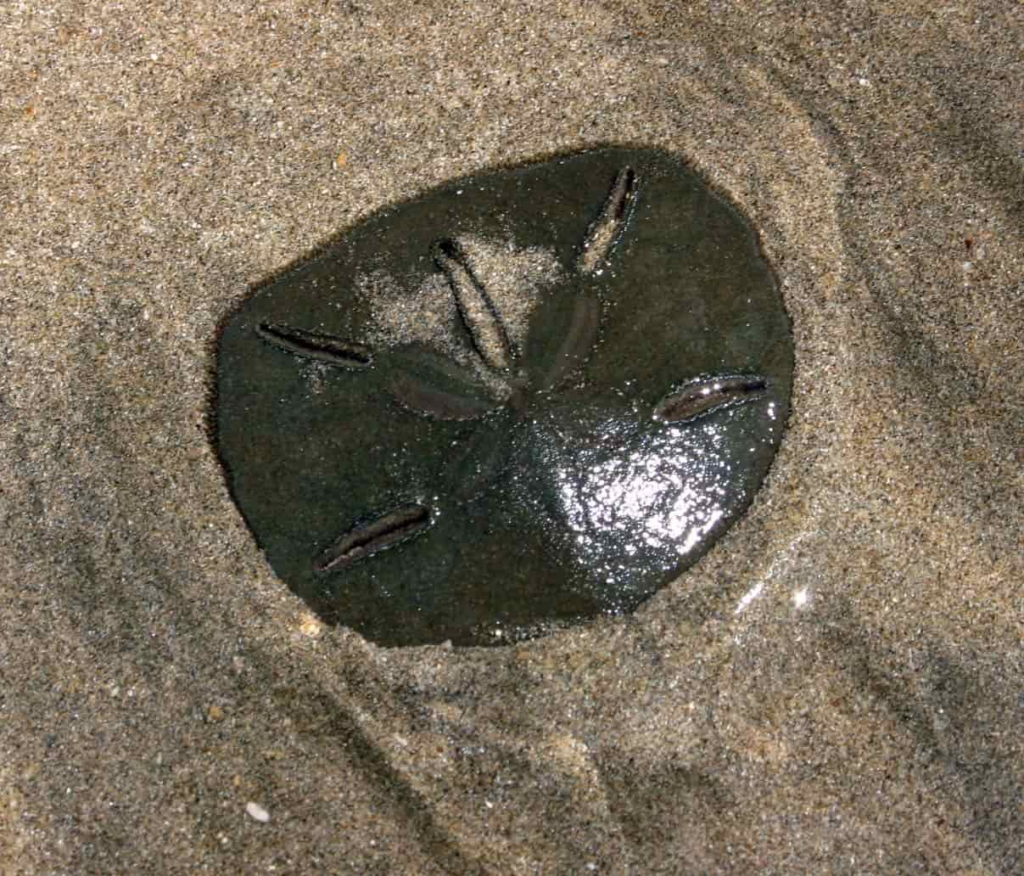Sand dollars are living creatures and when alive, they have tiny spines all around their body and you can see them moving. Furthermore, they have a purple color and they’ll produce a yellow substance if you put them on your hand. Dead sand dollars lose their spines and are generally white and rock-hard.
One of the first rules of collecting on the beach is to make sure when you take something home, you’re not taking anything that’s still alive. You should always make sure there’s not something still making a home in any shells you collect, make sure barnacles aren’t still living when you head home, and make sure you don’t take any live sand dollars.
What are Sand Dollars? Sand dollar is the common name for sea urchins in the order Clypeasteroida, who are relatively flat and burrow in the sand. It’s actually really easy to tell if a sand dollar is alive or if what you’ve found is just its “test,” or bony skeleton.
Read Here – Life of a Sand Dollar Explained
Sand dollars are one of the most interesting living marine creatures.
How to know If Sand Dollars Alive?
Spines and movement
One of the ways to tell if a sand dollar is alive or dead is to observe spines and their movement. Sand dollars have tiny spines all over their body that help them move around the ocean floor and bury themselves in the sand. This is a very characteristic feature for members of the Phylum Echinodermata to which sand dollars belong.
Color
The color of living sand dollars ranges from dark brown to purplish-red so they can stay camouflaged on the seafloor. The color may differ depending on the species since there are more than 200 of them!
There were even some rare species spotted on the coast of Australia and Indonesia with a bright pink color (Peronella Lesueuri). After sand dollars die, their skeleton is bleached by the sun and it eventually turns into silvery-white.



When sand dollars are alive, they are covered with a coating of cilia, small hairlike feet that help the sand dollar move and bury itself in the sand. These tiny spines move when the animal is still alive, so if you hold a sand dollar in your hand and feel the spines moving, it is living. The spines also give the sand dollar a dark color ranging from brown to grey to purple and red.
Finally, some sand dollars will leave a yellowish stain on your hands if you hold a live specimen. This harmless substance called echinochrome is another sign that you should return the critter to the water.
Hardness
You can also tell whether a sand dollar is alive or dead by its hardness. If you find a sand dollar skeleton that is rocky-hard and unbreakable, it’s probably a fossil. This sand dollar is definitely dead and you are pretty lucky to find one. Fossils are remains (or traces) of ancient animals.
They can preserve entire organisms or small parts by natural processes. There are some sand dollars fossils found approximately 150-50 million years ago!

Sand dollars can’t survive out of the water, so if you find a live one, put it gently back in the water. If you find a sand dollar on the beach, it is probably no longer alive and it is ok to take.
Even sand dollars that look grey or tan in color are dead if they have no tiny coating of furry spines on them. And, if you find one that is rock-hard and unbreakable, you’re lucky enough to have found a sand dollar fossil, which is a sand dollar that is definitely dead!
Can you hold a live sand dollar? We often find sand dollars on our beaches, and their beautiful skeletons make a great souvenir, but it’s illegal to collect them when they are alive.
